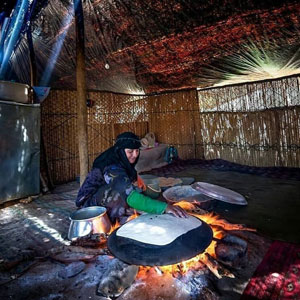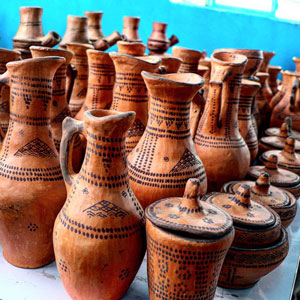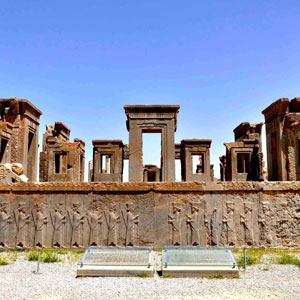 Signin with Google
Signin with Google Signin with Facebook
Signin with Facebook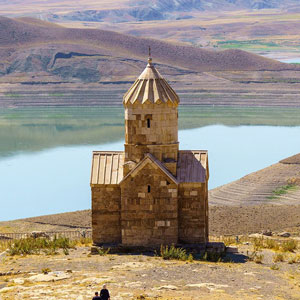 Places
PlacesA Garden of Millions Tulips between the Gorges of the Mountains

Somewhere outside of the Tehran province, in the slopes of high and soaring mountains of Alborz, near the city of Karaj, you'll find a village called Kondor. Just recently, Kondor has become famous for its upland Lezoor tulips garden. It is situated 22 kilometres Northeast of Karaj County and 7 kilometres from Karaj to the Chalous Road between picturesque valleys and highlands of the Alborz Mountains.
Road-59 known as the Chalus Road is among the topmost beautiful Roads in Iran, passing through Alborz Mountains with many twists and turn throughout the entire journey. Building this tortuous road was one of the masterpieces of engineering during the first Pahlavi Dynasty. Numerous long bridges and tunnels connect the Capital city of Tehran and Karaj to the Caspian Sea and the northern region of Iran through this unique natural, historical and tourism landscape. Chalus is not just a route; it's a destination itself, with its spectacular view, rivers reaching the mountain and colourful trees in fall.
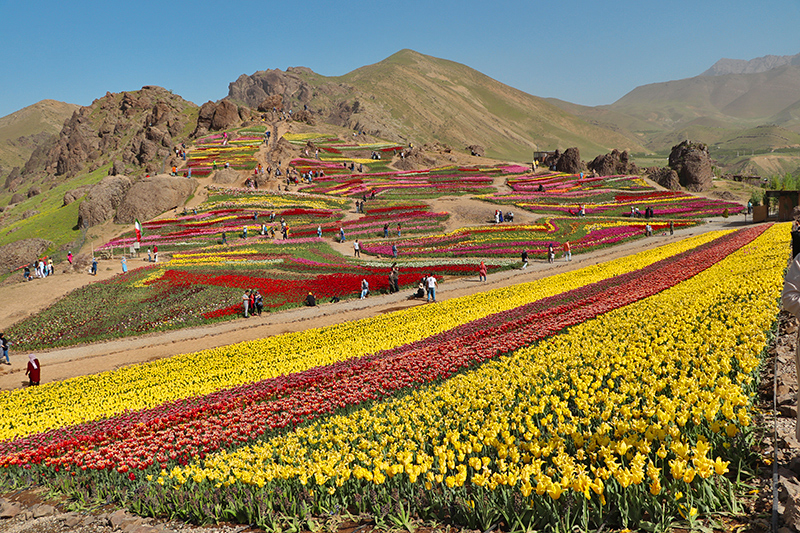
Lezoor, located in the foothills of the Alborz Mountains, surrounded by rural fields and fruit gardens, is to be made into a tourist village nearby Tehran. Most residents of Lezoor are the local villagers. The area still has its traditional texture to it. It has become a great tourist destination. The weather, the scenery, the mountains and now the tulips make this place a dreamy visionary; it almost feels like heaven on the highlands of earth.
Tulips garden locates 1900 metres above sea level
You find yourself in a festival of colourful tulips between the distant and tall mountains of Alborz, right amid spring. If you wonder how and why this field came to life, you should know that it all happened with the collaboration of local villagers and flower lovers. They planted this multicolour carpet of tulips at the foot of the mountain to double the beauty of the village. Even in the past, the villagers have planted tulips, but not as broad as what we see today.
The mastermind behind this idea is a private sponsor, who designed this deserted tulip field with all his love for nature. As well as helping indigenous tourism to grow, flourish, and add to the local attractions, this team encouraged importing fewer tulips and exporting more botanical medicine and herbs of this area.

For the first time, 2.1 million tulip and allium bulbs, in 30 different kinds, were cultivated in an area of about 3.5 acres. Iran is the hub of tulips; having around 170 various types of tulips growing all across the country. Some believe tulips were initially imported to Constantinople by the representative of the Roman Emperor.
This complex has an array of local markets, selling goods to visitors; providing a well-needed income for the locals. All this offers the visitors a chance to forget the busy city life for a few hours and capture photos of a heavenly frame of flowers surrounding them gently.
Tulips conveying their message Through Colours
Tulips come in a variety of colours, each having its significance. Red Tulips are associated with true love, while yellow tulips once depicted hopeless love as an interpretation for happy thoughts. Most interestingly, the variegated tulips represent beautiful eyes.
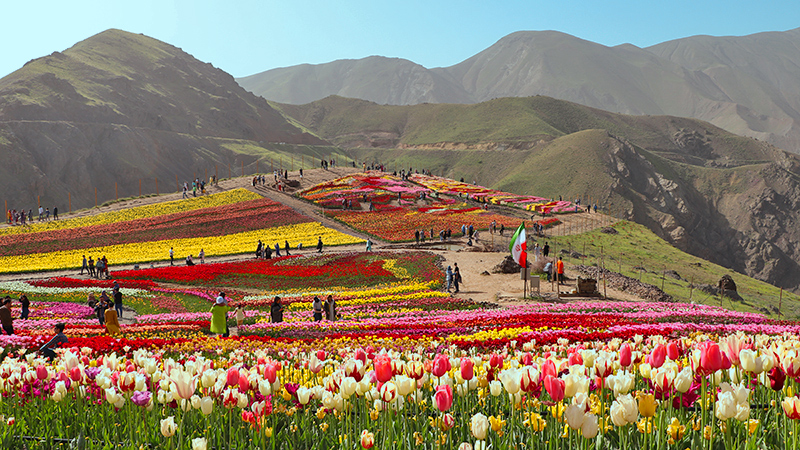
What is the best time to visit Lezoor?
The garden is hosting various tulip kinds only in the mid-spring and early May or Ordibehesht Month of the Iranian solar however, the tourist village of Kondor welcomes guests and travellers in the summertime when cherries and pears come to life and the weather above the hills gets pleasant and cool.
By Maryam Mobarhani / TasteIran

